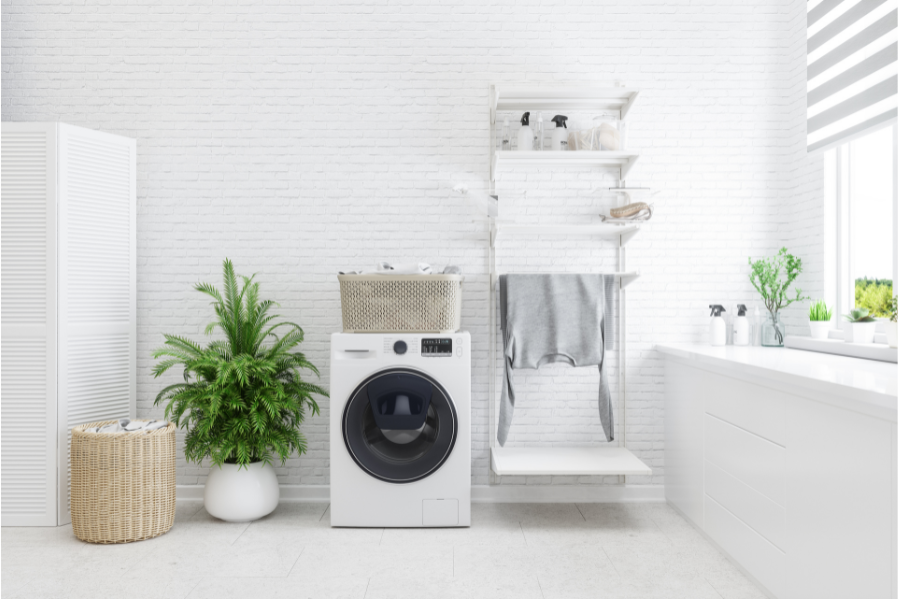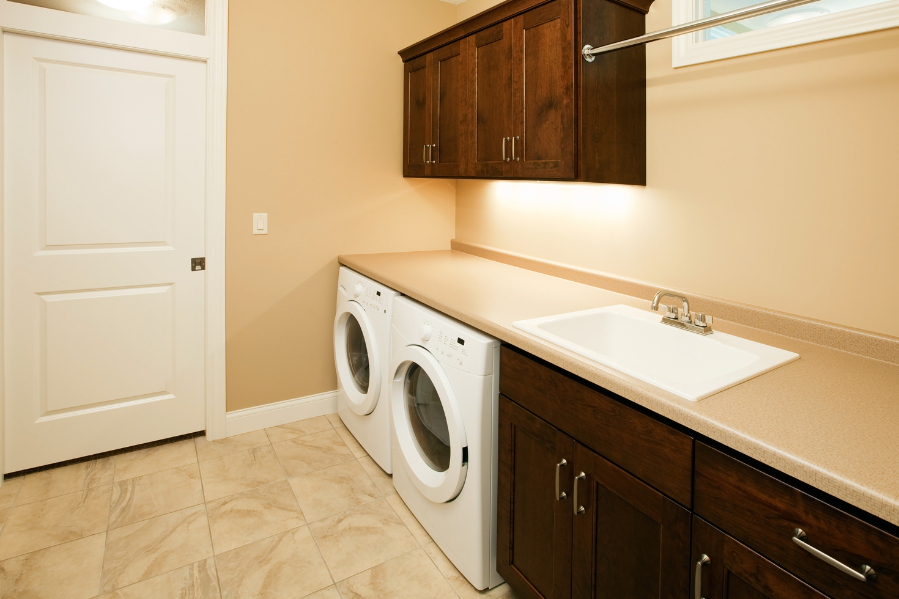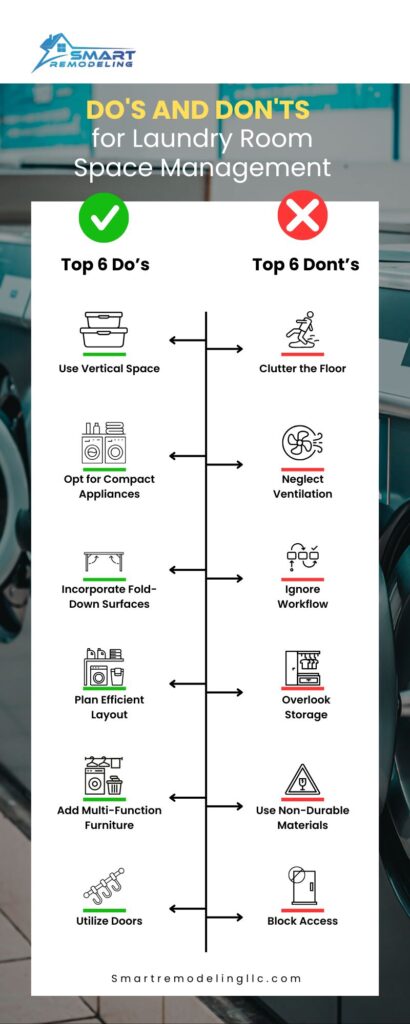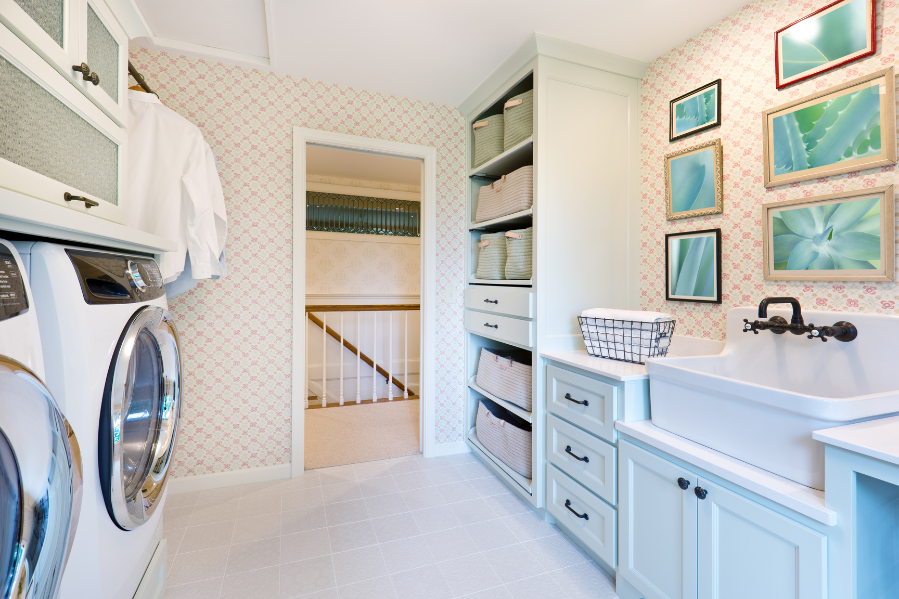It isn’t ever supposed to be the upgrade showpiece in your house, but design it the right size to create household efficiency and organization. Often, it is forgotten, yet the laundry room takes on some important roles concerning a household’s everyday routine.
Perfect size and proper layout make all the difference between a cramped, cluttered area and an organized, functional space. A laundry room has enough space not only for appliances but also for all other features and storage units you think you will add.
Whether you have a compact corner or a spacious utility area, an understanding of these aspects will help you design an efficient and comfortable laundry room.
Here’s an expanded guide to know how big your laundry room should be, taking into account the space occupied by various elements and how to optimize its size.
Understanding Laundry Room Dimensions

Here are the absolute key considerations when deciding how big your laundry room should be:
- how much space each component will take up.
- Ideal sizes vary with the configuration of your home and your specific needs.
Here’s a breakdown of typical dimensions and exactly what they mean in terms of the amount of space needed for the various elements:
1. Small Laundry Rooms (5 feet by 7 feet)
Space is small but quite functional in this type of small laundry room. In such a size, it should be practical to fit in a stacked washer and dryer unit which may only take up a footprint of roughly 2 feet by 2.5 feet.
Depending on the appliances’ size, it is easy to have a small counter or shelf with the storage space being only in wall-mounted shelves or small cabinets.
2. Medium Laundry Rooms (6 feet by 8 feet to 8 feet by 10 feet)
A mid-size laundry room allows for side-by-side configurations of appliances. In most instances, appliances require a space of almost 5 feet by 3 feet.
There is enough space for adding a countertop to the approximate 2 feet by 3 feet and some cabinets or shelves. This will enable better organization and greater flexibility for storing products.
3. Laundry rooms bigger than 10 feet by 12 feet
Large laundry rooms have enough space to fit appliances, plus a few extras.
For example, a side-by-side set-up of washers and dryers, a utility sink, and ample counter space can fit comfortably within. The utility sink, for instance, normally occupies an area of about 2 feet by 2 feet, and loads of counter space could be 4 feet by 2 feet.
This also offers plenty of cabinets or shelving, which provides utility and a much better organized laundry area.
Appliances and Features Occupied Space
Knowing how much space the components occupy is beneficial in your laundry room planning so you can ensure that you get everything you set out to do:
1. Front Loader washer and dryer

Front Loader washer and dryer typically located 27″ wide, 30″ deep, and 36″ tall. Stacked units save horizontal space approx. 2′ x 2.5′. When installed side by side, the total space is about 5′ x 3′.
2. Utility Sink
A utility sink requires about 2 by 2 feet of floor space. It is very handy to have when staining, pre-treating or washing delicate. When you are having a sink added, ensure that the location does not clutter the room.
3. Counters
Counters are used for sorting, folding, and processing laundry. In general, the total depth of the counter should be about 2 feet, depending on the space in the room. A counter of 4 feet long is considered standard in a medium-sized room, but in a much larger room, even longer counters can fit.
4. Cabinets/Shelving
Storage cabinets and shelves can be wall-mounted to not take up floor space but will require a wall area. Standard cabinets are available 12 inches deep. Shelving will vary according to need. Use wall space above the washer and dryer or along available walls for maximum storage.
5. Passageways and Space Clearance
Provide adequate clearance to the appliances. Ideally, the washer and dryer should have a minimum of 3 feet of space in front to operate comfortably and easily for servicing. When practical, more space, 4 feet or more, makes working and servicing more comfortable.

Factors Controlling the Size and Design of Your Laundry Room
There are many factors controlling the size and design of your laundry room:
1. Family Size and Needs
Much bigger families require much more space to allow for frequently done loads of laundry. A large room can fit multiple machines, more storage space, and a folding table or an ironing board.
2. Appliance Configurations
More substantial capacity washers and dryers, or supplemental appliances (like an extra washer or dryer) will require more space. Keep in mind to factor the full footprint of each configuration within your planning of the room.
3. Additional facilities
Utility sink, ironing board, and every other additional storage facility take up a lot of space. To these add all the extra features in room layouts so that they find their perfect fit and do not congest the rooms.
4. Accessibility and Comfort
The room should feel comfortable as well as accessible. The enough space within appliances and features lets one avoid cramped feelings and lets one use the appliance safely as well as effectively.
Designing a Functional Laundry Room
Designing a functional laundry room means more than just slapping appliances in the space. Here are some design suggestions:
1. Layout
Layout are appropriate for smaller rooms with one-wall layout and stacked appliances; L and U-shaped layouts are ideal for bigger rooms as they maximize interior and workflow
2. Storage
Storage Solutions of wall-mounted cabinets and shelves which can maximize vertical space; this will lead to keeping the floor area clear and organized.
3. Quality Counters
Above all, appliances considered should include folding and sorting. A big countertop or island can make all the difference in a larger space.
4. Lighting and Ventilation
The laundry room needs proper lighting and ventilation. Overhead lights with combination task lighting over work stations, right ventilation to avoid moisture buildup.
5. Utility Sink
A utility sink is very helpful and should be given its place. Keep it in a position where it is accessible yet not obstruct other areas of work.
6. Flooring
Choose flooring that is strong, hard-wearing, and resistant to water as much as possible. Vinyl, tile, and laminate flooring are great options. Make sure it’s easy to clean and maintain.
Space Optimization Tips
Making the best use of small laundry rooms purely by optimization is mostly the way forward:
- Wall Stacking: Maximize unused floor space through wall-mounted shelves, cabinets, and hooks.
- Stacked appliance: Save the horizontal spaces by stacking washer and dryer. This works out well in compact rooms.
- Folding surfaces: Installing folding ironing boards or foldable tables that open up when in use and fold up when not in use.
- Multi-use furniture: Using multi-purpose furniture, like a bench with storage for charging and storing things.
- Space Layout: Designing the room in such a manner that it provides easy and congestion-free movement between the activities.
Get Professional Laundry Room Design in Houston, TX
With Smart Remodeling Company, you’re choosing efficiency and dependability. Our team of experts specializes in laundry room remodels, ensuring your space not only looks fantastic but also functions perfectly to meet all your needs—and even exceed your expectations.
Experience the perfect combination of beauty and practicality with our award-winning design and craftsmanship, as we transform your home with style and added value.
Conclusion
No matter the size of your laundry room, from small nooks to spacious areas, thoughtful planning and design can transform it into an efficient and pleasant space. The key is finding the right balance between appliances, storage, and the overall dimensions of your home. By carefully considering appliance sizes, household needs, and available space, you can create a laundry room that’s both comfortable and functional.
Ready to upgrade your laundry room? Contact Smart Remodeling Company today to start planning the perfect space that fits your home and lifestyle!






